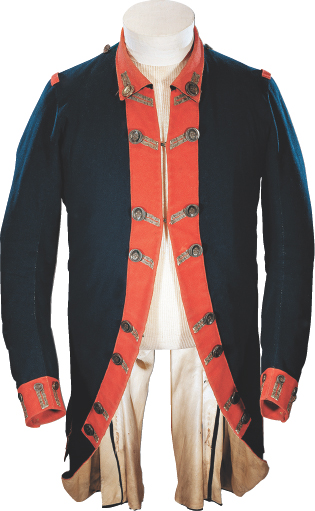The War for America, 1775–1783

Printed Page 158 Chapter Chronology
The War for America, 1775-1783

QUICK START
Quickly learn what is important in this chapter by doing the following:
- READ the Chapter Outline to see how the chapter is organized.
- SKIM the Chronology to see what will be covered.
When you are ready, download the Guided Reading Exercise, then read the chapter and the Essential Questions for each section and complete the Guided Reading Exercise as you go. Then use LearningCurve and the Chapter Review to check what you know.
Robert Shurtliff was a latecomer to the American Revolution, enlisting in the Continental army after the last decisive battle at Yorktown had been fought. The army still needed fresh recruits to counter the British army occupying New York City. The standoff would last nearly two years before the peace treaty was finalized in Paris.
New recruits were scarce in a country exhausted by war. Attracted by cash bounties, beardless boys who had been children in 1775 now stepped forward, Shurtliff among them. Reportedly eighteen, the youth was single, poor, and at loose ends. With a muscular physique and proficiency with a musket, Shurtliff won assignment to an elite light infantry unit, part of Washington’s army of 10,000 men stationed north of New York City.
That is, 10,000 men and 1 woman. “Robert Shurtliff” was actually Deborah Sampson, age twenty-three, from Middleborough, Massachusetts. For seventeen months, Sampson masqueraded as a man, marching through woods, skirmishing with the enemy, and enduring the boredom of camp. Understating her age enabled her to blend in with the beardless boys, as did her competence as a soldier. With privacy at a minimum, she faced constant risk of discovery. Why did she run this risk?
A hard-luck childhood had left Sampson both impoverished and unusually plucky. Placed in foster care at age five, Deborah became a servant in a succession of families. Along the way, she learned to plow a field and to read and write, uncommon skills for a female servant. Next she worked as a weaver and then a teacher, low-wage jobs but also ones without supervising bosses. Marriage was the usual next step, but probably the wartime shortage of men kept Deborah “masterless,” rare for an eighteenth-century woman. Masterless, but also poor; the cash bounty enticed her to enlist.
When Sampson’s true sex was finally discovered, she was discharged immediately. What eventually made Sampson famous was not her war service alone but her success in selling her story to the public. In 1797, she told her life story (a blend of fact and fiction) in a short book and then went on tour reenacting her wartime masquerade. Once again, she was crossing gender boundaries, since women normally did not speak from public stages.
Except for her disguised sex, Sampson’s Revolutionary War experience was similar to that of most Americans. Disruptions affected everyone’s life, whether in military service or on the home front. Wartime shortages caused women to take up traditionally male labor. Soldiers fought for ideas, but they also fought to earn money. Hardship was widely endured. And Sampson’s quest for personal independence — a freedom from the constraints of being female — was echoed in the general quest for political independence that many Americans identified as a major goal of the war.
Political independence was not everyone’s primary goal at first. For more than a year after fighting began, the Continental Congress resisted declaring America’s independence. Some delegates cautiously hoped for reconciliation with Britain. The congress raised an army, financed it, and sought alliances with foreign countries — all the while exploring diplomatic channels for peace.
Once King George III rejected all peace overtures, Americans loudly declared their independence, and the war moved into high gear. In part a classic war with professional armies, the Revolutionary War was also a civil war between committed rebels and loyalists. It also had complex ethnic dimensions, pitting Indian tribes allied with the British against others allied with the Americans, and international involvement as well from France and Spain. It also provided an unprecedented opportunity for some enslaved African Americans to win freedom, by joining either the British or the Continental army and state militias, fighting alongside white Americans.